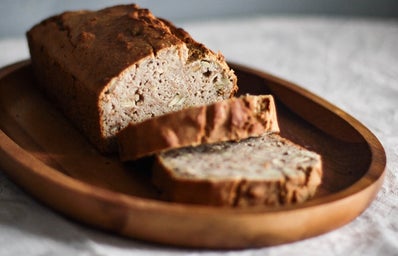As the years progressed, I’ve dived deeper and deeper into made-from-scratch food (I mean, how could I not when Food-Tok floods my feed with recipes, tips, tricks, and beautiful dishes?). Though I’ve ventured down many avenues of homemade cooking, there was one pantry staple I never dared to recreate: bread.

In my mind, bread-making toed the line between cooking and baking, which I had no interest in. It was too technical, easy to mess up, and out of my league — at least, that’s what I thought. Recently, I stumbled across a method of bread-making that has made my loaf-crafting dreams come true. So, for all the girlies who want to bake bread but are too scared, let me introduce you to “no-knead” bread!
“No-knead” bread is just what it sounds like: bread that doesn’t require kneading to become a perfect, fluffy loaf. The exclusion of kneading means you don’t need to worry about over or under-poofing your dough, benchmarks that are hard to identify for amateur bakers and have disastrous results if not avoided. You may wonder, “How does no-knead bread rise without developed gluten?”. Essentially, dough ferments over a long period, resulting in a chemical reaction similar to kneading without the half-hour of arm work. Though the loaves must ferment for 24 hours before being put in the oven, they can be left unattended, making them considerably low maintenance. No “special” ingredients, techniques, or tools are required. Easy.
While no-knead recipes make having fresh, delicious bread attainable, that isn’t its only selling point. Even outside no-knead recipes, making fresh bread at home can be cheaper and healthier than buying store-bought bread. With direct access to production, your bread loses harmful preservatives and additives commonly found in store-bought goods, such as potassium bromate, hydrogenated oil, trans fats, high fructose corn syrup, and azodicarbonamide. No-knead bread has unique properties, as breads that rely on longer fermentation processes tend to have increased B vitamins and other nutrients!
However, the best thing about no-knead bread is the many varieties to choose from. Need something versatile? This no-knead focaccia features olive oil and rosemary, which may be easily replaced with other ingredients for a wildly flavorful loaf. Do you require a simple side dish for a get-together? Share these no-knead dinner rolls with friends or family and impress them with your “baking expertise.” Maybe you’re a fan of the classics and want a warm, artisanal loaf of bread. If so, this 5-star recipe with over 19,000 reviews may be for you. Any way you slice it, there’s an option for you — homemade bread is just a few ingredients away.


